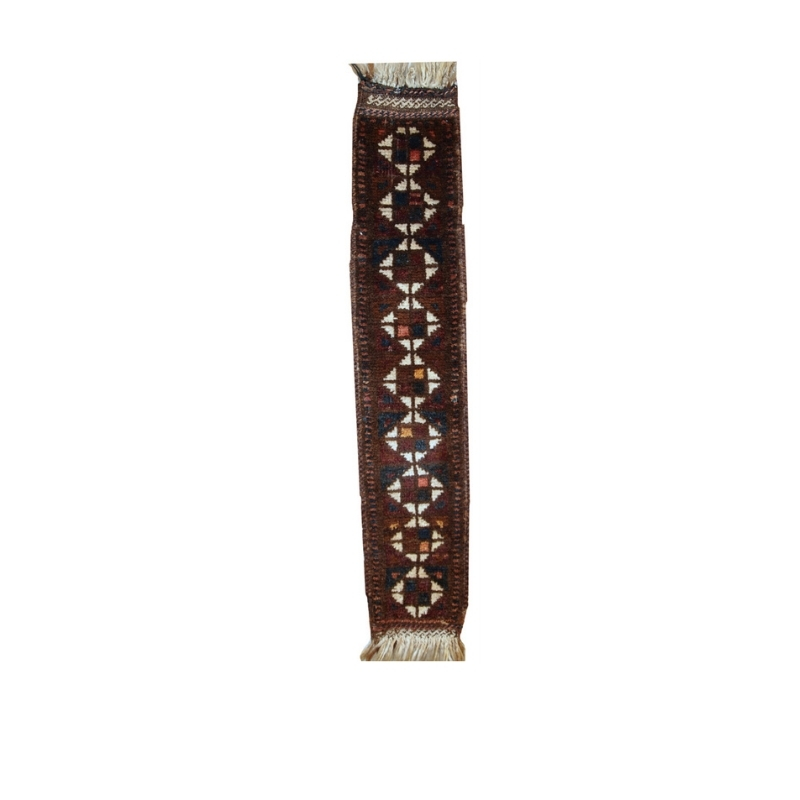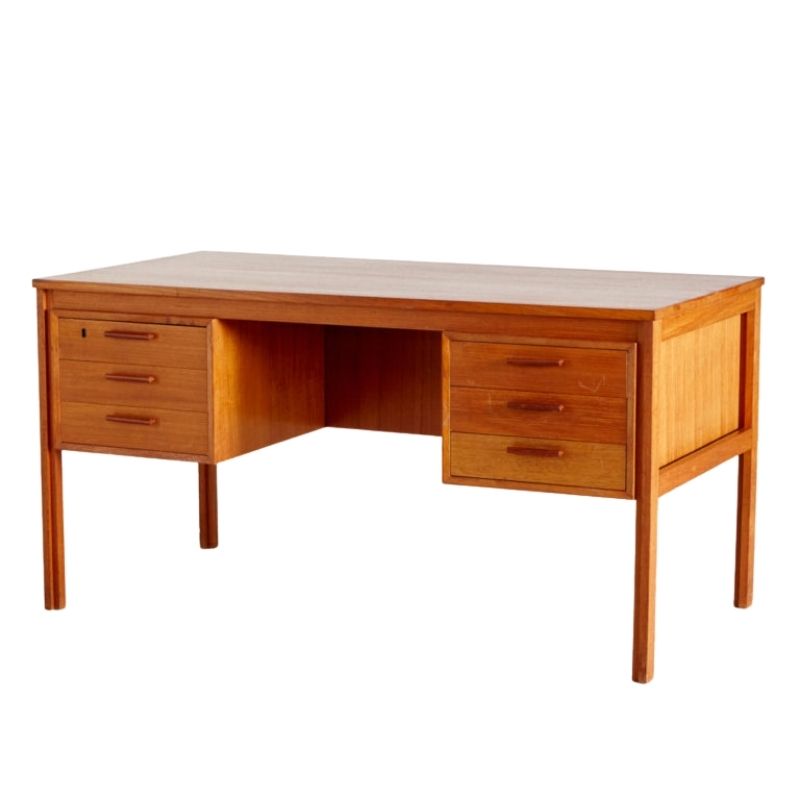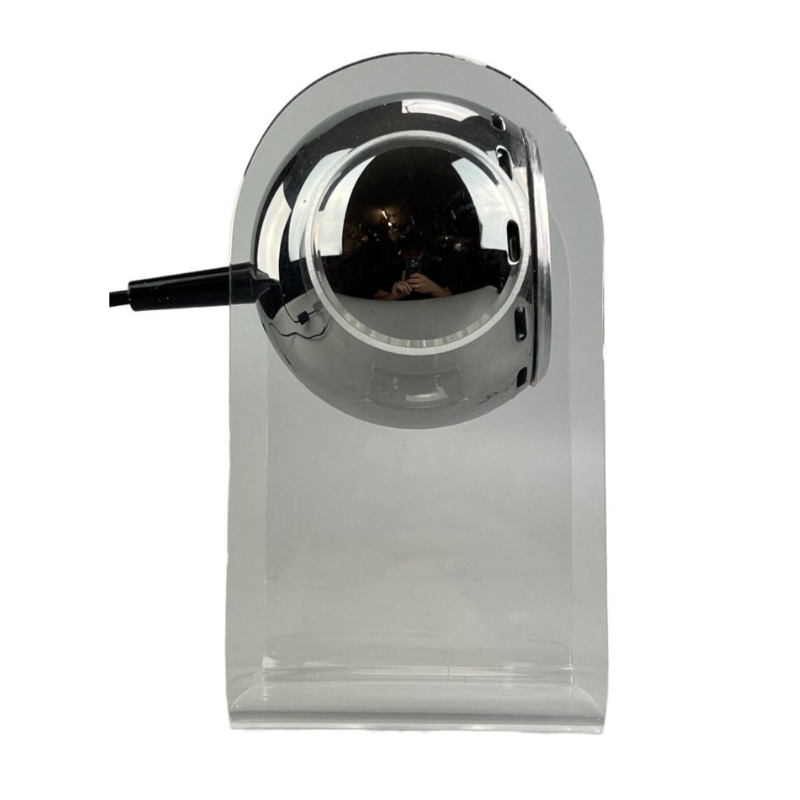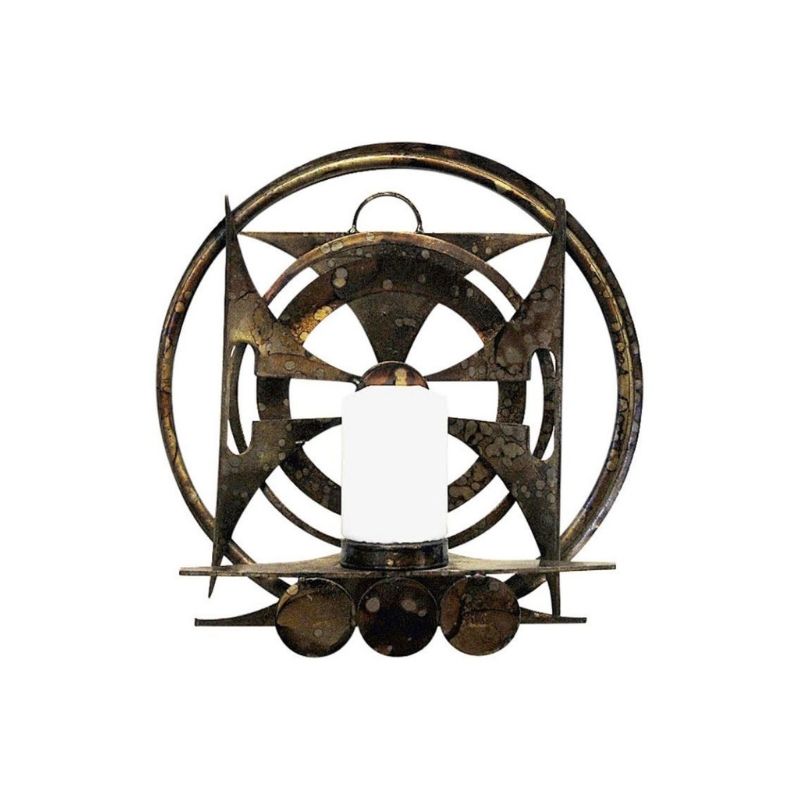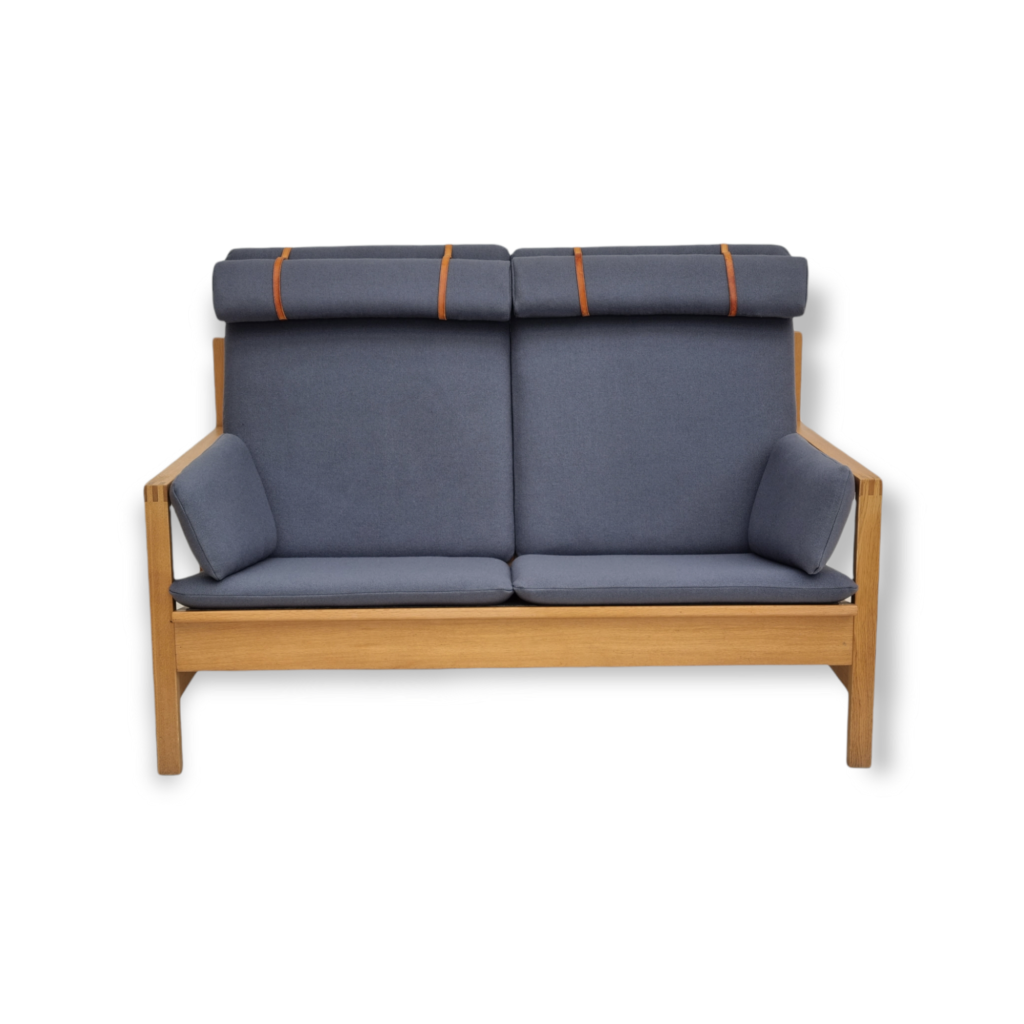At this point, with all the information gleaned from multiple and reliable sources, I'm going to suggest a slightly less drastic solution than the last one. (Leif, how would the owner saw the back panel loose without loss of material ? How would the posts be spread to enable reinsertion of the back, with dowels ?). That is, find an elastic filler, like silicone or acrylic caulk, that matches the wood color, and apply. I am assuming that the stresses have been relieved to the present state, not that the back will continue to delaminate. The suggested solutions are all well-thought-out and undeniably thorough. But each involves more effort and expertise than I think the owner is prepared to indulge in.
If that's correct . . . the project involves only finding (and mixing, if necessary) the right material, masking the edges of the cracks, and using finger pressure to force the material as far into the cracks as possible, finishing with a wipe with a thinner-moistened rag, and removal of the masking tape.
If this solution should turn out not to be permanent, because the back is still delaminating, the routing-and-insertion-of-new-wood would be the next step. It will be necessary to assure a cut with parallel sides, made in an even arc which matches the curve of the back(s). An elaborate jig will be constructed and clamped to the chair back, to guide the router on its (multiple) passes. I'd love to be involved; I expect I'm too far away from the work site !
That is a very good point about getting the dowels and the back rest back in. My thinking is that a permanent (50 years or more) fix would require a complete disassembly.
Perhaps the joints could be steamed apart. I have never tried that, but tchp is extremely talented and that is what he did with his Wegner Round Chairs.
But I think, as you have said, the question may be academic at this point, as ScanDesign has indicated he isn't comfortable with this level of invasion, which I completely understand.
So some sort of solution like you and tktoo have proposed is what it will be. Hopefully tktoo's hide glue experiment returns a good result.
I guess hide glue might have a similar consistency to silicone, when set ? I'm not advocating squeezing the cracks shut and expecting them to stay that way, I guess. But from here, it's hard to tell . . . !
I've worked not at all with hide glue since college. I suppose it could be steamed to softness, even in a closed joint ? You haven't loosened aliphatic resin with steam in such a joint, have you tk ?
SDR
Yes, these are Raastad & Relling Bambi dining chairs. I assume as well that Gustav Bahus was the maker. I have rekindled a thread I started a while ago on recaning Bambi chairs and talk about the chair in that thread.
What was really news is the wood ID. The information on Afrormosia was great. Thanks Leif.
There are apparently some really compentent wood workers involved. A simple question about wood filler has blossomed into a complete education.
SDR, hide glue properties as compared to those of RTV silicone I would have to describe as entirely opposite. It is generally hard, brittle, and has no useful gap-filling ability whatsoever. Joining surfaces must mate accurately. That said, hide glue grips wood at least as tenaciously as PVA. When I mentioned that the liquid variety of hide glue is comparably more flexible, I meant as compared to other varieties of hide glue, not PVA.
And yes, I have tried to loosen joints glued with yellow PVA by steaming and soaking with warm water. Though usually successful, I find the effort tedious and unsatisfying at best. Then, after sanding, shaving, or paring away the residue (because, contrary to popular belief, PVA will not bond to cured PVA), one still has to refit the joint by shimming with veneers or using larger diameter dowels and redrilling sockets. A right PITA, IMO.
I took the clamps off earlier today and applied hand-pressure. Seems to hold fast. The pieces are roughly 2"x2"x3", so I'm only able to exert so much force by hand. I was able to dig my fingernail into the squeezed-out hide glue quite easily as it is still relatively soft even after more than 24 hours. Tomorrow i'll try some mechanical force and break the joints, but I'm already a little surprised by how solid the bond seams.
Seams?? WTF? Freudian slip, I suppose.
Headed out to my shop the break the joints soon. I'll wait for my kid to get home from school to post pics.
SDR, in my experience hide glue bonds at least as well as Titebond to bare wood. Again, there are many different grades available and some are better suited to specific tasks. On the whole, hide glue is more brittle and, thus, less prone to creep, but may not perform as well in situations where joints might be subject to shock. Titebond has slightly better gap-filling ability, too, I think, so it is perhaps a better choice where joinery is less than precise.
Great. So now I have to dig up hide glue. Wonder what it is called in Swedish.
By the way Leif, in post #27, you mention a Reenskaug Rocker.
I would love to see a picture. I am going to add a post to a Rocking Chair thread that I started. I want to add a pic of a Vestergaard-Jensen rocker which I think is magnificent. But that is for another thread.
Liquid hide glue comes in a bottle. In tests done by Fine Woodworking Magazine, it actually performed better than the traditional hot hide glue made of dissolved granules. I am not sure if it is just as reversible as hot hide glue or not. The difference is that urea is added to liquid hide glue to keep it workable in a liquid form, or at least that is what the magazine said.
ScanDesign, the "hide" part in the name refers to animal hides, if that helps in trying to find it in Sweden. You probably already knew that, but I thought I'd mention it since "hide" has other meanings.
Hide glue has a Wikipedia page! I love the internet.
http://en.wikipedia.org/wiki/Animal_glue
And animal glue has a Swedish variant which lists a few names in Swedish:
http://sv.wikipedia.org/wiki/Animaliska_lim
If you need any help, please contact us at – info@designaddict.com




